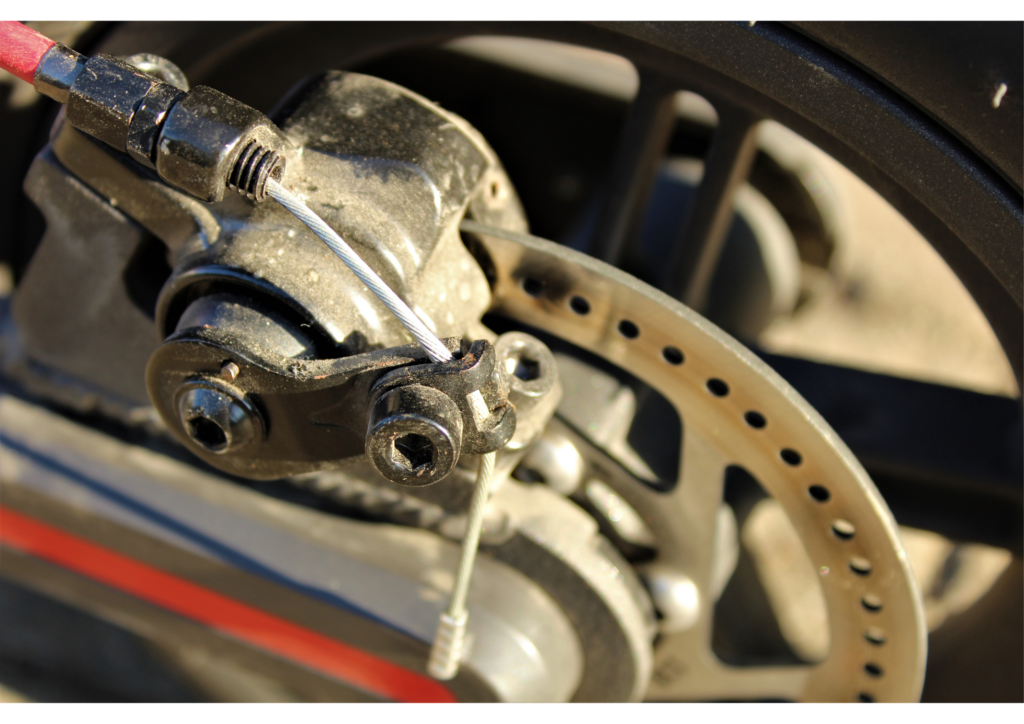
Are you ready to take a deep dive into the world of e-scooter brakes? As we witness a surge in e-scooter usage, it’s crucial to understand the workings of their brakes to prioritize safety. From regenerative braking to electronic and mechanical brakes, there’s a fascinating array of technologies incorporated into these compact vehicles. In this comprehensive guide, we will explore how e-scooter brakes work and discuss vital practices for maintaining and using them effectively. Let’s embark on this journey to ensure a smooth and secure riding experience for all e-scooter enthusiasts!
Regenerative Braking: Harnessing Energy Efficiently
One of the most intriguing features of modern e-scooters is regenerative braking, where the kinetic energy from braking is converted back into electrical energy to recharge the battery. This section will delve into the mechanics of regenerative braking and its environmental benefits. We will also explore how regenerative braking influences the overall efficiency and range of e-scooters, highlighting its role in sustainable urban mobility.
Electronic Brakes: Precise Control at Your Fingertips
Electronic brakes have revolutionized the way riders engage with e-scooters. Leveraging advanced sensor technology and intelligent braking algorithms, electronic brakes offer riders exceptional control and responsiveness. In this section, we will uncover the intricate workings of electronic brakes, including the role of sensors, electronic control systems, and how they contribute to the overall safety of e-scooters. We’ll also discuss techniques for optimizing electronic brake usage to enhance rider safety and comfort.
Mechanical Brakes: The Time-Tested stalwarts of Safety
When it comes to reliability and simplicity, mechanical brakes have stood the test of time. Whether through drum brakes or disc brakes, the mechanical braking system serves as a dependable backup for e-scooter users. In this section, we’ll take a deep dive into the components and functionality of mechanical brakes, shedding light on maintenance best practices and the crucial role they play in ensuring rider safety, particularly in challenging terrains and adverse weather conditions.
Maintaining E-Scooter Brakes: Prolonging Their Lifespan
To upkeep optimal safety and performance, maintaining e-scooter brakes is paramount. This section will provide a comprehensive breakdown of regular brake maintenance, including cleaning, adjustment, and inspection techniques. We will delve into the importance of regular checks for worn-out brake pads, fluid levels, and the overall condition of the braking system. By implementing these maintenance guidelines, riders can ensure their brakes are reliable and responsive, contributing to a secure riding experience.
Using E-Scooter Brakes: Best Practices for Safety
Equipping oneself with the knowledge of best practices for using e-scooter brakes is instrumental in averting potential accidents. This section will spotlight the significance of smooth and gradual braking, particularly when descending slopes or navigating crowded areas. We will also uncover tips for maintaining a safe stopping distance from obstacles and other road users, emphasizing the need for situational awareness and clear communication of intentions through proper brake usage.
Conclusion: Brake Safely, Ride Confidently: Mastering E-Scooter Brakes
In conclusion, understanding the intricate mechanisms behind e-scooter brakes empowers riders to prioritize safety and maximize the lifespan of their vehicles. Whether it’s the eco-friendly benefits of regenerative braking or the reliability of mechanical brakes, each braking system plays a crucial role in ensuring a secure ride. By adhering to maintenance practices and embracing safe usage techniques, riders can harness the full potential of e-scooter brakes, unlocking a seamless and secure riding experience. So, let’s embrace the thrill of e-scooter adventures while keeping safety at the forefront!

I love how in-depth this guide covers different types of e-scooter brakes. It’s really helpful in making informed decisions as a rider.
Thank you, Mei Ling, for your kind words! We’re thrilled to hear that you found the guide informative and helpful. At Eko Life Malaysia, we prioritize your safety and the environment, which is why we’ve created this comprehensive resource on e-scooter brakes. For more information on our e-scooters and accessories, feel free to reach us at [email protected] or +60 3-7890 3042.
The tips on regular brake maintenance and proper braking techniques are really crucial for safe riding. Thanks for putting this together!
Hi Kavin Lee, we’re glad you found the tips on regular brake maintenance and proper braking techniques helpful. At Eko Life Malaysia, we prioritize rider safety and strive to provide the best possible experience for e-scooter enthusiasts. If you have any more questions or concerns, please don’t hesitate to reach out to us at [email protected] or +60 3-7890 3042. We’re here to help.
I must say, the section on environmental benefits was enlightening. I had no idea e-scooter brakes could make such a significant impact on sustainability.
Hello Joyce, we’re glad you found the section on environmental benefits informative! Regenerative braking is indeed a game-changer when it comes to reducing our carbon footprint. At Eko Life Malaysia, we strive to provide sustainable and eco-friendly mobility solutions. If you’d like to learn more about our e-scooter models and their braking systems, please don’t hesitate to reach out to us at [email protected] or +60 3-7890 3042. We’re always here to help.